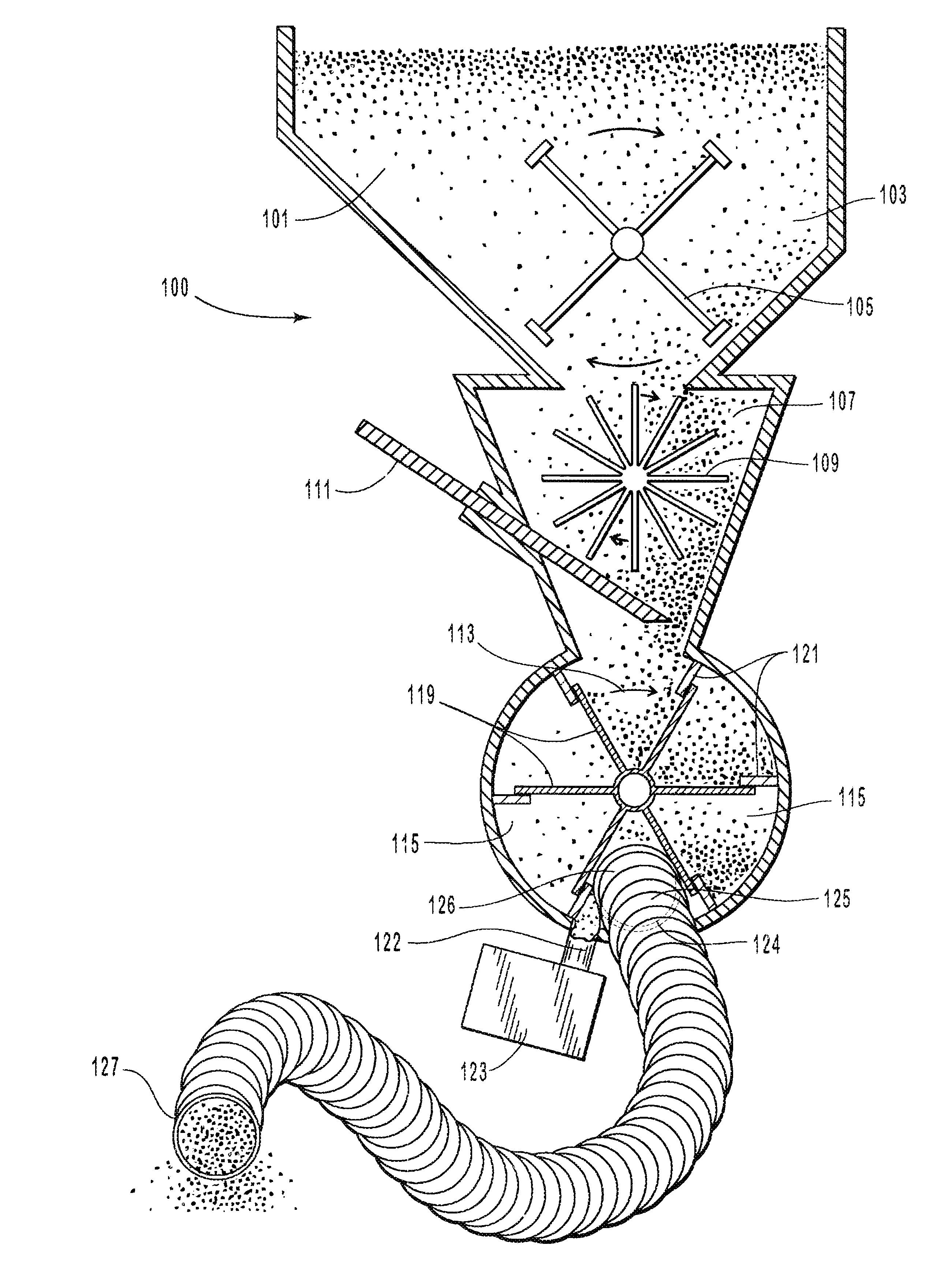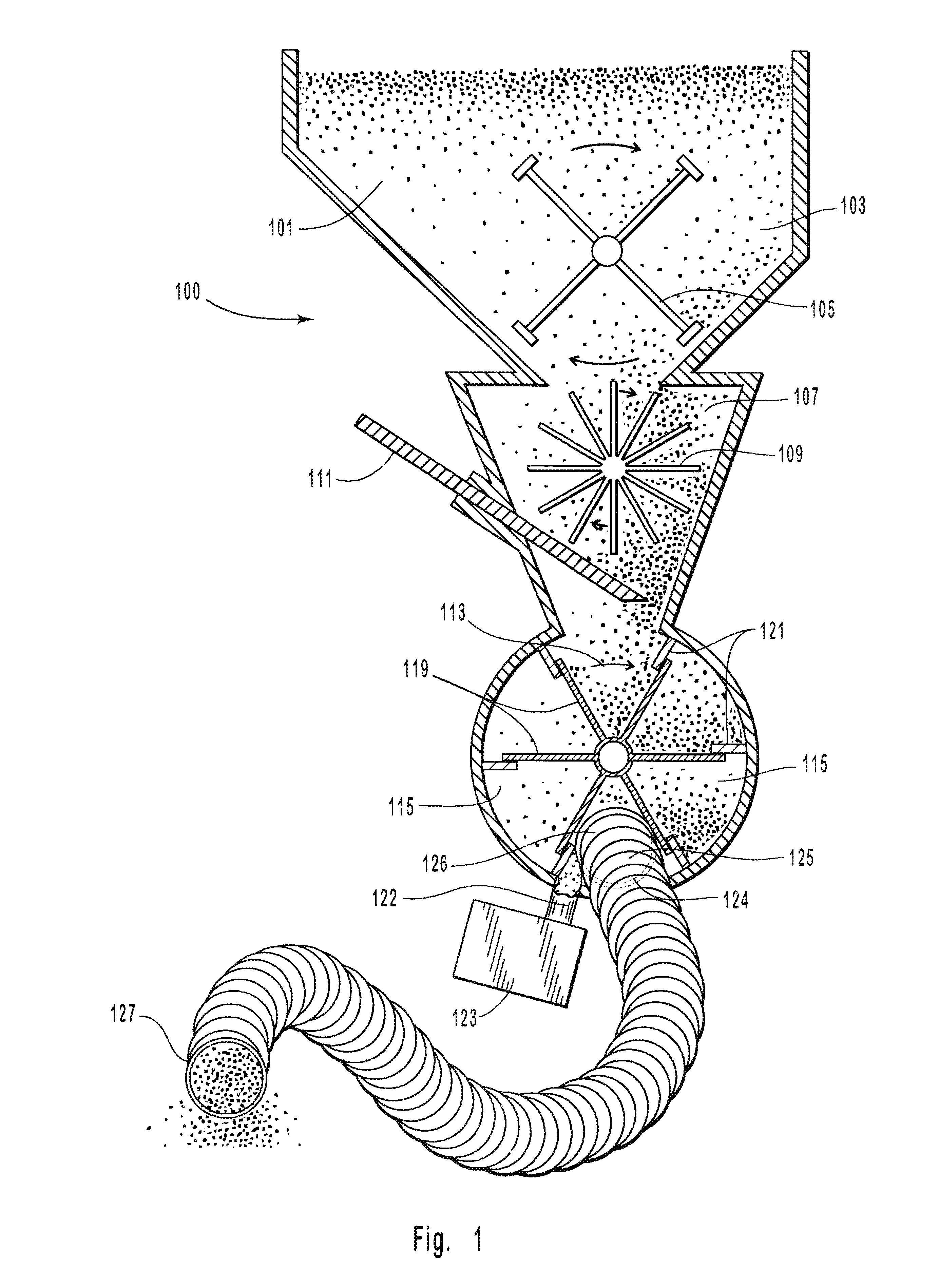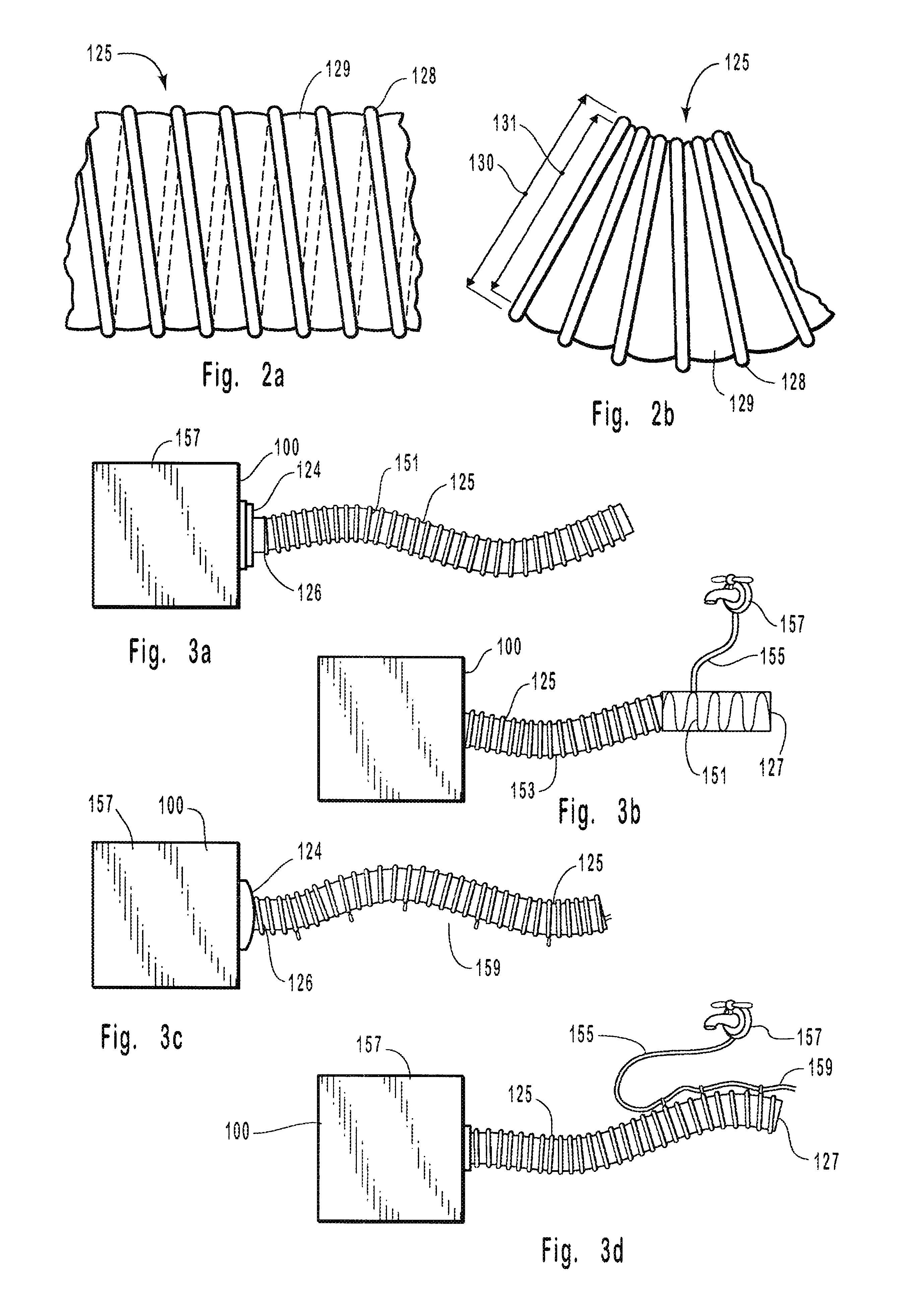Static free method for blowing loose fill insulation
- Summary
- Abstract
- Description
- Claims
- Application Information
AI Technical Summary
Benefits of technology
Problems solved by technology
Method used
Image
Examples
Embodiment Construction
The same insulation material was applied by blowing according to the method of the invention. The equipment was essentially the same as in the previous example, except the hose was of a conductive material grounded to the blower. The hose was the same dimension as the conventional plastic hose and comprised a polyethylene helical frame supporting in its interior a film hose of conductive carbon impregnated plastic. During installation of the insulation, there was little dust and application of the insulation material was readily observable, which made it easier to control the application. The operator experienced no shocks, even when he touched a grounded surface. The flow rate the insulation through the hose was 3200 pounds per hour, an increase of 15% over the flow rate in the prior-art example.
The blown density was about 1.65 pounds per cubic foot, which settled over the same time to a settled density of 1.8 pounds per cubic foot. The increase in density was only about 9%. The se...
PUM
 Login to View More
Login to View More Abstract
Description
Claims
Application Information
 Login to View More
Login to View More - Generate Ideas
- Intellectual Property
- Life Sciences
- Materials
- Tech Scout
- Unparalleled Data Quality
- Higher Quality Content
- 60% Fewer Hallucinations
Browse by: Latest US Patents, China's latest patents, Technical Efficacy Thesaurus, Application Domain, Technology Topic, Popular Technical Reports.
© 2025 PatSnap. All rights reserved.Legal|Privacy policy|Modern Slavery Act Transparency Statement|Sitemap|About US| Contact US: help@patsnap.com



